It is a common occurrence for anyone to experience an accident when they are not fully attentive, resulting in unintentional drops of various objects, including precious diamond rings. In such a situation, one might wonder: Can a diamond chip if dropped?
While diamonds are not the most resilient material, the chances of them chipping or breaking from accidental drops are highly unlikely. However, it is important to note that diamonds are not indestructible, and there are factors that can potentially damage them.
In this comprehensive article, we will explore the causes of diamond damage and provide helpful tips on how to prevent such incidents. So, without further delay, let us delve into the subject.
DESIGN YOUR OWN ENGAGEMENT RING: START WITH A SETTING OR START WITH A DIAMOND. IT’S REALLY UP TO YOU!
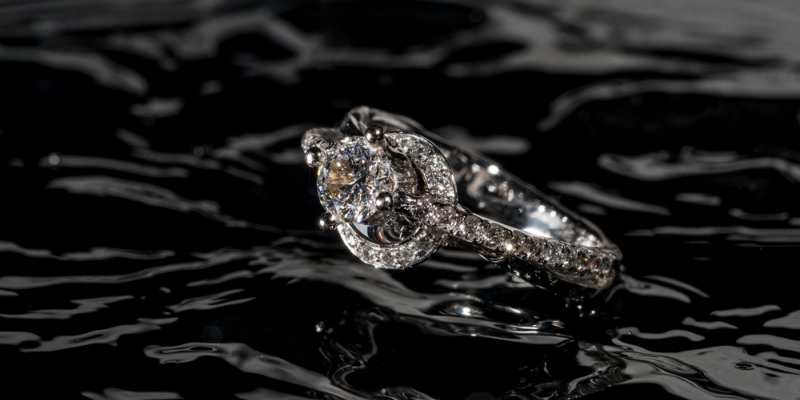
The Difference Between Hardness And Toughness
Distinguishing gemstones as “durable” involves considering two distinct characteristics: toughness and hardness. It is common for people to confuse these terms, but they have different meanings.
Diamond Hardness
Diamond is renowned for being the hardest known material on both the Mohs scale and the Vickers scale. In fact, diamonds are the hardest substance on Earth. This exceptional hardness has been recognized since ancient times and is the origin of the diamond’s name.
However, it’s important to note that diamonds are not impervious to damage. They can be scratched by other diamonds and can gradually wear down when exposed to softer materials. The hardness of a diamond is influenced by its purity, crystalline perfection, and orientation.
Since hardness is determined by the strength of atomic bonds within the crystal, variations in hardness can exist depending on the direction of measurement. For example, octahedral faces of a diamond are harder than cube faces.
The Mohs scale, introduced by Friedrich Mohs in 1822, characterizes the scratch resistance of minerals. Diamonds rank at the highest level of 10 on this scale.
To delve deeper into why diamonds are so hard, continue reading.
Diamond Toughness
Toughness refers to a material’s ability to resist breakage from forceful impacts. The toughness of natural diamonds is relatively good compared to other ceramic materials but falls short when compared to most engineering materials.
Toughness is indicative of a gemstone’s resistance to breaking, chipping, and cracking in general. It is evaluated on a toughness scale, which ranges from exceptional, excellent, and good to fair and poor.
Similar to other materials, a diamond’s macroscopic geometry contributes to its resistance to breakage. Diamonds have a cleavage plane, making them more fragile in certain orientations. Diamond cutters strategically utilize this characteristic by cleaving some stones before faceting them. Despite diamonds being the hardest mineral, they can still fracture and chip due to normal wear and tear in everyday use.
Diamonds are formed within the cubic crystal system and possess four cleavage directions. Therefore, diamonds receive a toughness rating of “good.”
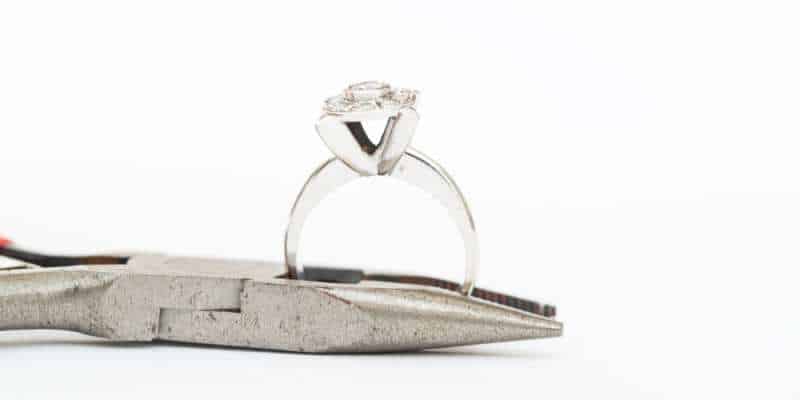
What Happens If You Drop A Diamond?
Imagine you’re taking off your diamond ring, but you accidentally drop it on the floor or unknowingly knock it against a hard surface. It’s natural to worry when such accidents occur, fearing that your diamond may be permanently damaged. However, there’s no need to stress too much because a single drop or knock is unlikely to cause significant harm to your diamond.
In the most extreme cases, a diamond may chip as a result of a hard fall or strong impact. However, by a “hard blow,” we mean a forceful hit at a perfect angle. If you drop your diamond on a regular floor, it should be perfectly fine.
After retrieving your diamond from the fall, you might notice a horizontal line on it. But don’t mistake it for a crack; this line is a reflection caused by the pavilion facets, known as girdle reflection. It may resemble a feather inclusion or crack-like appearance. Interestingly, this line is always present, but it becomes visible for the first time when the diamond is dropped.
What Can Cause Diamond Damage?
Diamonds can break if subjected to a strong force, such as being struck with a hammer. The toughness of a diamond is approximately 2.0 MPa, which is relatively decent compared to other gemstones but not as good as engineering materials. Therefore, hitting a diamond forcefully with a hammer will likely result in it breaking. Additionally, the surface on which the diamond is placed must be hard for the diamond to break.
If you attempted to break a diamond with your teeth, you would not succeed; instead, your tooth enamel would chip off almost instantly. Similarly, trying to break the stone with pliers would generally indicate that it is a fake diamond. If the diamond doesn’t break when subjected to pliers, it’s likely a genuine diamond—or you may have a weak grip. Pliers are sometimes used to test the toughness of a diamond.
In general, any gemstone, not just diamonds, will break if struck forcefully enough with a tough object. Despite diamonds being the hardest mineral on the Mohs scale, they can still be damaged by impact from another diamond. Therefore, if multiple diamonds are stored together, they can scratch each other and potentially suffer breakage.
Lead is softer than diamond but denser. When a lead bullet hits a target, it tends to flatten upon impact. So, if you were to shoot a diamond with a bullet, the diamond might deflect it depending on the angle of impact. The outcome could range from a crack to a complete shattering of the diamond.
In summary, always remember that a diamond can shatter when struck with an object that is tough enough.
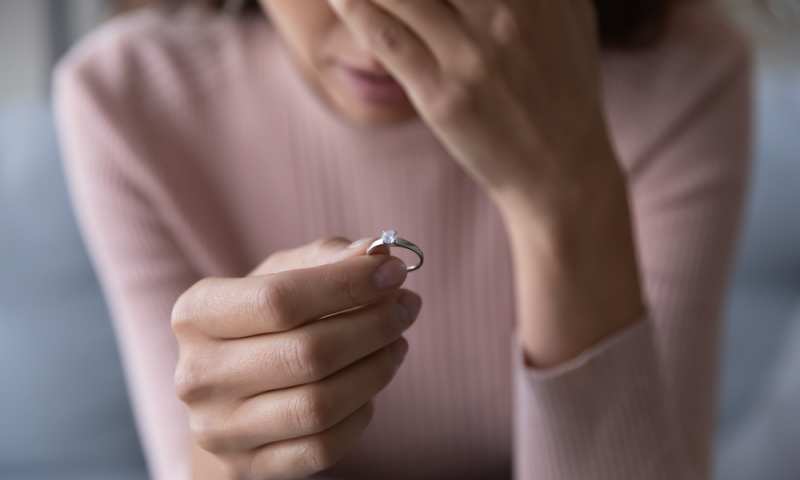
What To Do If Your Diamond Gets Chipped
When an accident like this occurs, the first and most important step is to gather information about the value of your diamond and the extent of the damage.
Having this information will help you make an informed decision on how to proceed.
If you are responsible for caring for your diamond, it’s crucial to ensure that it is properly insured. Always have your diamond jewelry appraised by qualified experts and obtain insurance coverage that fully covers replacement in the event of theft, loss, or damage.
Most standard homeowners insurance policies offer limited coverage for jewelry, which is often insufficient for replacement purposes. Therefore, carefully review the policy’s details before purchasing to ensure you are adequately covered for accidental damage or loss.
If your diamond has chipped and you’re contemplating the next steps, it might be an opportunity to consider an upgrade. If your budget allows, think about purchasing a larger or higher-quality diamond.
Many people are unaware that chipped diamonds can be re-cut. The cost of re-cutting will depend on the severity of the damage, as it may involve removing a portion of the diamond’s surface depending on the size of the chip.
Keep in mind that re-cutting will incur additional costs and may result in a smaller diamond. The size alteration might also affect how the diamond fits in its mounting, possibly necessitating a new mounting and head.
For small chips, a jeweler can turn the diamond in the mounting so that a prong covers the chip. If the chip is larger and closer to the table of the gemstone, you have a few options:
- Use larger prongs.
- Opt for a more secure setting that better conceals the chip compared to prongs.
- Have the jeweler create a different type of jewelry using the diamond.
It’s advisable to take your diamond to a reputable jewelry store to have the damage assessed and obtain professional advice on the best course of action.
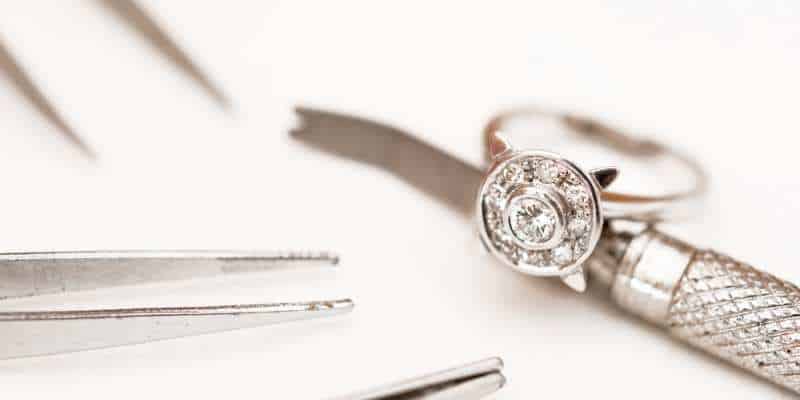
How To Reduce The Risk Of Diamond Chipping
Chips in diamonds often occur when the diamond’s girdle comes into contact with hard surfaces, such as kitchen or bathroom countertops. Additionally, wearing jewelry items with diamonds positioned next to each other can also lead to chips.
To minimize the risk of chipping, it is advisable to avoid diamond shapes with sharp corners. Shapes like oval, round, and rounded-corner cushions are less prone to chipping. In some diamond cuts, a technique called chamfering is employed, which involves adding small flat facets to the corners to enhance durability, especially in princes’ cuts.
Protecting the culet (the bottom tip of the diamond) is essential as well. While older diamond cuts used to have a small facet at the culet for protection, most modern cuts have a sharp point at the culet, making them vulnerable to chipping. However, once diamonds are set in jewelry, the risk of culet damage is minimal.
Girdles with thin sections are more susceptible to breakage, while thicker girdles offer better resistance to damage. It is important to choose a setting that provides adequate protection for the diamond’s vulnerable corners or points. V-shaped prongs, bezels, or partial bezels can offer enhanced security.
Caution should be exercised with tension settings, which rely on a groove in the metal to hold the diamond. The exposed sides of the diamond in this setting are more vulnerable to breakage during regular wear, and the condition of the diamond’s girdle should be carefully assessed before using this type of setting.
Regularly inspecting the prongs that hold the gemstone in place is crucial. Broken or bent prongs can increase the risk of chipping or damage to the diamond. Prongs play a significant role in protecting the sides, corners, and points of the diamond. If any prongs are bent or damaged, they should be repaired to ensure proper security for the diamond.
It is not advisable to wear a diamond that is already chipped, as the existing chip can worsen. It is best to have the diamond repaired before wearing it again.
Inclusions near the girdle or points of the diamond can make it more prone to chipping or breakage. Even a small feather near the girdle or point can leave the diamond vulnerable to chipping if struck precisely in the direction of the cleavage plane. Open cavities at the girdle also pose a risk of damage.
Regular maintenance and inspection of your diamond jewelry are important to identify any potential issues and ensure the diamond’s protection.
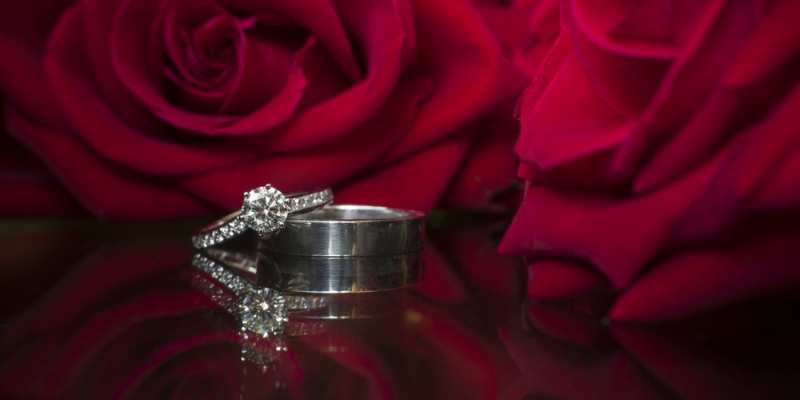
Bottom Line
If you’re still uncertain about whether a diamond can chip if dropped, let us provide a definitive answer:
Although diamonds are renowned for being the hardest substance, they are not impervious to damage.
Compared to other gemstones, diamonds have good toughness, but when compared to engineering materials, their toughness is relatively poor.
Nevertheless, the chances of a diamond chipping when dropped on a regular floor are highly unlikely. Only under extreme circumstances, such as a forceful blow, would a diamond potentially chip.
In the event that your diamond does get chipped or damaged, there are options available. It is advisable to insure your diamond to protect its value. You may also consider obtaining a new diamond or having the damaged one re-cut.
It’s important to recognize that no gemstone possesses perfect toughness, and any gem can break if subjected to sufficient force. The girdle of a diamond is particularly susceptible to damage.
Diamonds with thin sections on their girdles are especially vulnerable to harm.
To minimize the risk of damage, it is advisable to refrain from wearing diamond jewelry during activities where there is a higher likelihood of forcefully striking them against solid objects.


